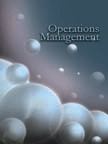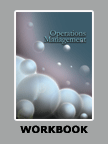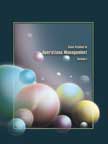Taiichi OHNO and Toyota Production System




|
|
ICMR HOME | Case Studies Collection
Case Details:
Case Code : OPER043
Case Length : 19 Pages
Period : 1998-2004
Organization : Toyota
Pub Date : 2005
Teaching Note : Available
Countries : Japan
Industry : Automobile (Two Wheelers)
To download Taiichi OHNO and Toyota Production System case study
(Case Code: OPER043) click on the button below, and select the case from the list of available cases:

Price:
For delivery in electronic format: Rs. 500;
For delivery through courier (within India): Rs. 500 + Rs. 25 for Shipping & Handling Charges
» Operations Case Studies
» Case Studies Collection
» ICMR HOME
» View Detailed Pricing Info
» How To Order This Case
» Business Case Studies
» Case Studies by Area
» Case Studies by Industry
» Case Studies by Company
Please note:
This case study was compiled from published sources, and is intended to be used as a basis for class discussion. It is not intended to illustrate either effective or ineffective handling of a management situation. Nor is it a primary information source.
|
|
<< Previous
"The Toyota Production System has to evolve constantly to
cope with severe competition in the global marketplace"
- Taiichi Ohno, the architect of Toyota's Production System,
in 1977.1
"The more profitable Toyota becomes, the more attention
TPS gets."
- Rieko Ohsaki, business development manager at OJT, a TPS
consulting firm in 2004.2
Richest Automobile Company
|
In May 2004, Toyota Motor Corporation (Toyota) announced record financial
results for the fiscal year ended March 2004. The company's revenues and
operating income had reached highs of $163 billion and $15 billion respectively
(Refer Exhibit I). What was noteworthy, however, was that the company's net
earnings were more than double the combined net earnings of automobile majors
General Motors (GM), Ford, DaimlerChrysler, and Honda for their latest fiscals
(Refer Exhibit II). Toyota was firmly entrenched as the most profitable company
in the automobile industry in the early 2000s. At a time when the giants of the
industry were making meager profits and some were even suffering losses, Toyota
showed steady profits.
|
|
This profitability gave the company a strong position in the Japanese economy
as well as the global automobile industry, and helped it grow rapidly.
|
|
Because of its stable cash position, it was able to invest in the
development of new technologies like hybrid engine systems3
and develop brands like the youth-focused 'Scion', which many believed to be
risky. Analysts said that the foundation of Toyota's strong performance was
its much analyzed and emulated manufacturing system, which made use of
concepts like Just-in-Time (JIT) and Kaizen or the process of continuous
improvement, to reach a high level of efficiency in production. Through its
competitive advantage in manufacturing, Toyota was not only able to maintain
its award winning levels of quality, but was also able to rapidly capture
market share by exercising aggressive cost control and churning out better
car models. |
Taiichi OHNO and Toyota Production System
- Next Page>>
|
|



